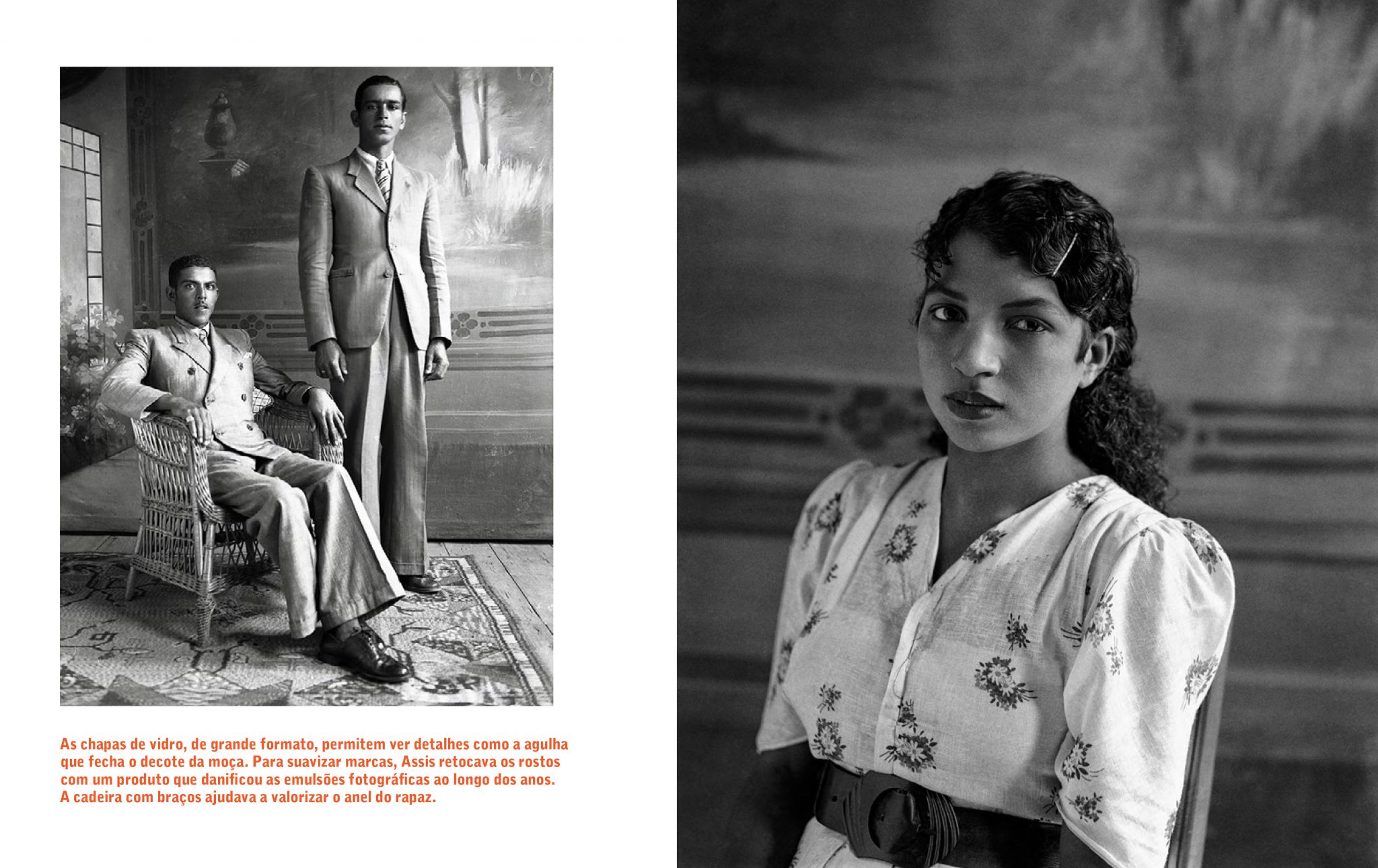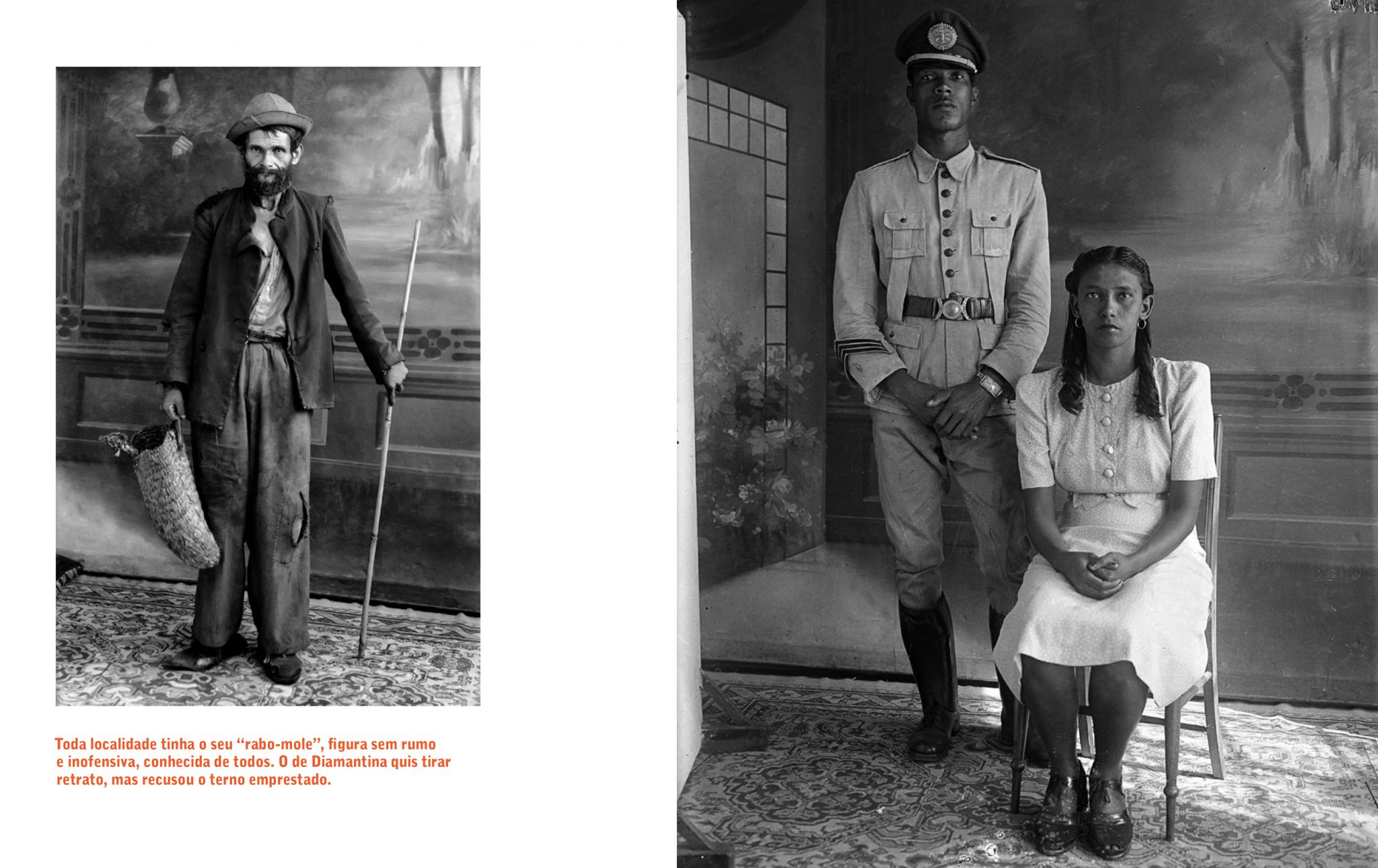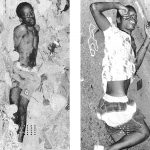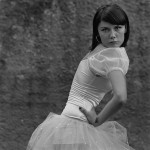Assis Horta’s Single Shot
Publicado em: 22 de December de 2014A Cigarra, an illustrated fortnightly magazine published in São Paulo, a city starting to go through major urban change, published a short essay in its May 20, 1916 issue entitled “O retrato: usos e funções” [the portrait: uses and functions]. Under the by-line of Luís Carlos, who never appeared again, the text addressed a big issue of the time: the permanence of the photographic portrait, its function as a factual record.
“The invention of photography betrays man’s unspoken yearnings: vanity and immortality,” the author wrote. The essay was reproduced in Antologia Brasil, 1890-1930: pensamento critico em fotografia [Brazil anthology, 1890-1930: critical thinking in photography] (2013), by Ricardo Mendes. In the author’s view, “an old picture always awakens […] a distant period that it refers back to as if it were a mute moan from the past […]. Despite the fading of the photograph, the expression of man’s evolutionary moment fixed in time gains longevity, which is already some sort of immortality. And so, vanity is justified.”
Assis Horta, whose old friends still use his childhood nickname “Assizinho” [little Assis], did not read any of this. In fact, he was born two years later, in 1918, in the Diamantina of the miners and Juscelino Kubitschek; the land of the legendary slave, Chica da Silva, and of the future classic Minha vida de menina (My life as a girl), by Helena Morley.
But both the illustrated magazines from the first decades of the 20th century and Assis Horta’s lenses helped build a portrait of Brazil as it changed. With a big difference, however: A Cigarra and its counterparts published images depicting the status and social life of the elites, while the photographer from Diamantina gave a face, identity and photographic visibility to the working class. Thus freed from anonymity, they reveal the subject both as a class representative and as an individual, part of the visual history of Brazil.
And, if that was not enough, in an artistically exciting way.
Luck knocks on the door
It is easy to recognize the Assis Horta of today on a sunny August Sunday, strolling amongst the habitués of the Praça da Liberdade, a republican landmark in Belo Horizonte. First the hat, without which he would feel naked, then a navy blue wool cardigan over a striped shirt, and an ancient tie pin, securing his burgundy, check tie. He grips his noble carved wooden cane – “a satisfying job,” says the owner.
Observed from a distance, he could be a typical gentleman of yore who, at the age of 96, is still up to a family stroll. Just ask him something that interests him, however, and Mr Assis, as he is called by everyone except his intimate friends, reveals his youthful curiosity about the new, showing that he is well-informed about the present and still has an excellent memory of his past.
The surest way to get him to tell stories in his mischievous way is to ask about his family. Not even photography, something which shaped his life and has secured him a permanent place in national culture, can get him as talkative as the memory of Maria, the companion he shared his life with for 71 years.
Until his wife’s death last year, the couple went through life hand in hand – even at home. The names of their ten children were selected especially so that their initials formed the acrostic maria assis. As they were born, they were baptized Marluce, Assis, Rosiléia, Isnard, Aglaé, Argel, Sérgio, Sílvia, Izabel and Sávio. “But I never took a portrait of Maria when she was pregnant,” boasts the husband photographer, who appreciates modesty. “I’ve never taken photos of naked women. Not even at the Moulin Rouge in Paris – indeed, I felt ill when a couple I was travelling with asked me to photograph there.”
After losing his father at the age of five, Assizinho lived at the Grand Hotel on Rua da Quitanda, which was managed by his mother, until he married Maria, the “first girlfriend I spoke to.” He began doing small jobs at the age of nine without completing primary school – nothing unusual in the Diamantina of the 1930s, where many of the 10 to 18-year-old boys would work in trade, agriculture, livestock, and the mining industry or in factories.
The Grand Hotel hosted all sorts of guests, from the owners of the region’s diamond mines on the lookout for more manpower, to local people. Assizinho was lucky – when he was still a teenager, his mother encouraged him to get to know the lawyer, journalist and writer Rodrigo Melo Franco de Andrade, who was looking for someone with notions of photography to help him make a photographic survey of Diamantina.
Known around town as “Dr” Rodrigo, the founder and president for three decades of the Brazilian Artistic and Historical Heritage Bureau (SPHAN), created in 1937, had a project in mind. Only 20 years older than Assizinho and the father of the future filmmaker Joaquim Pedro de Andrade, he wanted to repeat in Diamantina the feat that Ouro Preto had managed – it had been designated a “National Monument” four years earlier. He succeeded: the Diamantina historical centre was listed as a National Heritage Site in 1938.
For this to happen, it was necessary to map every alley, house, business, church, and public building in the town and put together a collection of images to support the process. Assis Horta proved himself well-suited to the task, although his experience to date in photography was anchored in experimentation and curiosity, self-teaching and sensitivity, observation and zeal. He avoided all academic, school and technical training. He started as a photographer when he was only 14, helping Celso Tavares Werneck Machado, a businessman, builder and local studio owner. It was in 1936, when he became 18, that Assizinho had the audacity to buy the studio where he was working as an apprentice, and renamed the old Werneck Studio to Photo Assis – Materiaes Photográficos das Principais Marcas e Cinematográficos para Amadores e Collegios [Assis Photo – top brands in photographic and cinematographic materials for amateurs and schools]. Even though he was juggling two jobs – his job at SPAHN and his studio work – he started to travel frequently to Rio de Janeiro by train to purchase supplies and equipment that were scarce in Diamantina. He readily remembers the business address where he became a frequent customer: Rua Dom Geraldo, 42, in the centre of the city. He made the most of these escapades to walk from Praça Mauá to the vicinity of the St. Benedict monastery.
He returned from one of these expeditions with a wooden camera engraved with the name “Marc Ferrez, 88, Rua São José, Rio de Janeiro.” On another trip, he brought back the Annuaire General de Photographie of 1899. Sensitive and intuitive, he made the best possible use of the textbooks and materials that were sent to him by suppliers in Rio, which was still Brazil’s capital.
However, in those early days of Assis Photo, people did not discuss the work of Ferrez, nor Militão Augusto de Azevedo, or Augusto Malta. The most revered name in portraiture in Diamantina was Francisco Augusto Alkmin, Chichico (1886-1978), from an earlier generation than Assis. Son of landowners and brother of José Maria Alkmin, Minister of Finance for President Juscelino Kubitschek and vice-president for Marshal Castello Branco, Chichico was the town’s pioneer of studio photography and the first visual chronicler of Diamantina in the early 20th century . His extensive output of about 5,000 glass negatives is a unique record of the cultural, political and social life of the time, and the town’s architecture, religion and customs.
Chichico Alkmin’s photographic eye, fed mainly on the French school of painters and portraitists of the 19th century, eventually produced a rich and acclaimed “human and urban landscapes” collection, which was the title of the exhibition held last year at Memorial Minas Gerais Vale.
It was up to self-taught Assis, with his first studio on the corner of Rua do Bonfim and Rua do Contrato, to pursue his own path and remove himself from the shadow of the revered Chichico. He started with the basics, looking for his clients in social groups that were unfamiliar with the experience of having their portrait taken. Thanks to the foreigners – the gringos – passing through Grande Hotel, who enjoyed hearing Assizinho’s amusing stories, he was commissioned to document the work of extracting diamonds and make photographic records of famous stones.
He became friends with a couple of black miners who lived in the Palha neighbourhood in the outskirts of Diamantina. They were such close friends that they gave Assizinho the gold from which his wedding rings were made. Many decades later, an enlarged photo of Dimas, one of the miner’s sons, was displayed in the town’s Diamond Museum as part of the Diamantina 360o – Sob o olhar de Assis Horta [Diamantina 360o – under the gaze of Assis Horta] exhibition. The nonagenarian Mr Assis was there to witness the dismay of the equally old Dimas when recognising himself in a photo taken 70 years before.
Another money-making opportunity fell into the photographer’s lap in 1941, with World War ii in full swing. He was asked by the Commander of the 3rd Battalion of the Minas Gerais Military Police, stationed in the region since 1890, to take portraits of a hundred of his soldiers. Front and profile. “The military police paid well,” he recalls, mischievously.
At that point in his life, Assis Horta had already found a way to overcome his early departure from school. According to his son Isnard, “my father has developed his own strategy to read and write.” Isnard is number 4 of 10 offspring and the only one allowed to see the enormous collection stored in the basement of Assis Horta’s current home in Belo Horizonte. Engineer and urban planner, Isnard admires his father’s approach to reading. “He reads in his own way, but he reads, encrypts and decrypts, taking notes on the book itself,” he says. “When the subject interests him a lot, as with writing and research about Diamantina, he will make additional notes. On the margin of a book with information about a town character, for example, he adds: ‘I have many pictures of him and his children’ or ‘I have an old photo of his house.’”
Minha vida de menina, by Helena Morley, a Brazilian of English descent (baptized Alice Caldeira Brant), describes life in Diamantina at the turn of the century. It was one of the books that marked Mr Assis soon after is was first published in 1942. One of the greatest satisfactions of his long life punctuated by joy is having made the winning bid at an auction for a silver thread bag that once belonged to the writer. The accessory, with the name “Alice” engraved on the lining, is carefully kept to this day by the proud owner in his safe.

Large glass plates show details such as the thread and needle used to keep the girl’s neckline a little more modest. To display the ring, the man asked for a chair with arms.
The face of the worker
Assis Horta was only 25 years old and barely a year married when a decree dated May 1, 1943 – 122 years of Independence and 55 years of the Republic – signed by the then President Getúlio Vargas, revolutionised labour legislation in Brazil. Article 1 of the historically significant decree starts: “The Consolidation of Labour Laws [CLT] is hereby approved. The ordinance that accompanies this decree sets out the changes introduced by the current legislation.” The new set of labour laws, the individual work card and social security system were to become mandatory for the exercise of any employment, including rural and even temporary work. The same rule went into effect for those exercising autonomous paid professional activity. And, according to Article 16, the new individual work card must include, besides a worker number, serial number and date of issue, a photograph of the bearer, “stating the date on which it was taken.”
For citizen Assizinho, nothing changed, since he had had a work card since he was 17. For the professional photographer Assis Horta, however, the owner of the renowned Photo Studio now located at a new address, the Vargas decree was decisive: it enabled his career to move up a notch and reveal the historical-documentary dimension of his work.
At the request of a brother-in-law who ran a spinning and fabric factory in Biribiri, on the outskirts of Diamantina, Assis Horta visited the factory a few times. He was commissioned to photograph the c. 300 workers employed there for their new work cards. It was quite a task. Built in 1876 by Bishop Dom João Felício dos Santos to provide jobs for former slaves, the wives of farmers and workers, and orphans from the Nossa Senhora das Dores School, the Biribiri factory also provided accommodation for female workers. A year before, incidentally, Assis Horta and Maria had spent their honeymoon in one of the 30 homes built next to the factory. (As a village, Biribiri came to house 1,500 residents at the height of industrial production in the mid-20th century. There was a school for the children of employees, lodgings for single workers, a grocery store and even a dental clinic. Today, the 30 houses and everything else have been deactivated and placed into the trust of the Minas Gerais Institute of Historical and Cultural Heritage. Situated in the midst of an idyllic landscape, the site has found a new vocation as a setting for film, TV and soap opera directors in search of bucolic locations.)
The first serial portrait session at the Factory began exactly 60 days after the new labour laws were introduced. Assis Horta started work just before lunch and continued his toil after the meal break. He sought to interfere as little as possible in the routine of the establishment.
He arrived with his camera – which is still his sweetheart –, a Compur bellows with an original Voigtländer Braunschweig Heliar 1:45f lens, a tripod and a light reflector. The format of his choice was always 9 x 12 cm. He talked little with the ladies he portrayed. He just showed them to the only chair in the room, and asked them to hold a sign with the date, a requirement of the labour law, and asked for their names. There was no need, as they would be completed by the work card issuing office, but still he would scribble their names on the back of each card as part of his methodical cataloguing of his valuable professional file.
Biribiri took him about 4 days of work and opened the doors to other textile factories such as Cia. Industrial São Roberto, with a mixed labour force, wanting to follow the new decree to the T. “It was great for me, financially,” he recalls with juvenile satisfaction. He charged three cruzeiros per 3 × 4 or postcard size photo. He would arrange his bellows camera on a tripod, set up the reflector and only worked with natural light, with a slow exposure. It was one click per photo – in fact, he considers it normal even today to have always used just one click per photo.
Have you ever been disappointed when you see the glass plate revealed? “Never. Either it worked or it didn’t. But it always worked,” he assures, changing his story a little. He believes he has never burned a photo or needed to throw any in the trash. But he could not tolerate a picture out of true, “so all my cameras had bubble levels.”
For many of the female textile workers who dressed up, all serious, committed and somewhat tense sitting in the chair placed in front of Assis Horta, the session may have been intimidating. “The girls prepared as best they could,” recalls the portraitist. “They arranged their hair and, although they were at work, took special care for the occasion.” Guilherme Horta (the surname is coincidental), researcher and curator of the special Assis Horta exhibition Assis Horta: a democratização do retrato fotográfico [the democratization of the photographic portrait], held at the Planalto Palace in celebration of 70 years of the new labour laws, declared his solidarity with the presumed stress of workers. “Even I, dammit, when I got my work card, made sure to put on a suit and tie. And look – I belonged to the counterculture, a rocker, I was an early 80s rebel,” he admits today, aged 48. He is also a teacher, multifaceted artist and studio owner who printed the exhibition images.
In contrast, when workers finally had their 3 × 4 pictures in their hands, and more, could actually take the paper copy to show to whomever they wanted, the impact must have been memorable. For many of those women, and men too, it was the first picture they had ever had taken. And it was permanent, no longer just their reflected image in a mirrored surface.

Every locality has its local down-and-out, an aimless and harmless figure known to all. This one in Diamantina wanted to have his picture taken, but refused to borrow the suit
The photographic studio
Although photography had been pioneered in Europe more than a century before, and despite major photography studios having already been part of the Brazilian cultural scene for decades, the labour law requirement for a dated photo triggered in the urban workers in the region the taste, desire and competitive urge for social photography.
A pioneer in capturing the individual image of a class hitherto almost invisible, such as the factory workers in the Diamantina region, Assis Horta gave them a visual identity and in doing so provided a valuable tool for scholars of Brazilian social history. For the portrayed, it was a great treat. Although the 3 × 4 was intended for mere professional records, Assis Horta photographed each subject reverently and diligently, taking great care with the lighting.
The result: a good part of this chance clientele wanted more and started to show up for a new session. But this time in the master’s studio. They came in style, either alone or accompanied by spouses, children, friends. Anticipating the inevitable demand for a greater variety of portraits, Assis Horta took some steps to address this eager new clientele.
Right in the studio’s shop window, in view of passers-by, he displayed samples in various sizes – from mere 3 × 4 prints to imposing 50 x 60 cm copies. And inside the studio he established a basic men’s wardrobe for free use of customers who came in unprepared – a shirt, jacket, hats, neckties and assorted pocket handkerchiefs. Women rarely needed help – they already came with the necessary gracefulness. A broad cloth panel, painted by three local artists, served as the only backdrop. A nearby portable mirror was available in the case of doubt. As usual, Assis Horta only worked with natural light and a reflector.
Every session began with the same question: “How do you, sir, or you, madam, want your photo taken?” It was up to each person to decide whether they preferred to remain standing, sitting or posing. The photographer would only interfere in the scene to correct any imperfect collar, creases or adjust the composition. As always, he shot one click per photo – even if a fly landed on the sleeve of the white jacket of a client, spoiling the shot, or when the shoe of a child fell off at the crucial moment.
Seventy years after those sessions in the studio, Assis Horta still has an acute memory for many of those he portrayed. When a young lady wore a severe dark suit and shoes more suitable to a man, he offered to place a bright natural flower in her lapel. The introverted client was so delighted with the result seen in the mirror that she took the flower home. And then a customer chose to sit on an armchair to be able to show off the ring on his little finger, considering it indispensable to the photo. Mr Assis remembers: “The problem was not the ring, it was the six-button jacket that constricted him. Double-breasted jacket? Four buttons only,” he teaches, disconsolate.
To the physical trainer who wished to show off his muscles, the photographer suggested he take his shirt off. And to a young lady with a drooping jaw, the unjust work of nature, he suggested she held her hand to her face to support it – this photo eventually resulted in the most expressive portrait of the series. Another female figure depicted from an oblique angle confusingly evokes Guignard’s painting Menina [girl].
In general, everyone he portrayed at Assis Photo maintained a serious posture. Not even the children would smile. “They took the studio session very seriously,” explains Assis Horta. With the small exception of a husband who asked him to show his gold tooth in the picture and so risked a half smile.
In their own way, the many Brazilians who passed in front of the lens of Assis Horta eventually gave reason to a comment made by MASP’s (São Paulo Museum of Art) critic and curator José Teixeira Coelho, during the exhibition Olhar e ser visto [see and be seen], four years ago: “The picture both surrenders to the viewer’s gaze and looks carefully back.”
The big tour
Once established in his profession, Assis Horta embarked on an adventurous threemonth trip to Europe in 1954, invited by two other couples, friends from Diamantina, who, being wealthy, paid for the whole enterprise. Lacking social ease and cosmopolitanism, the four feared travelling in foreign lands without the company of a more resourceful friend – Assizinho, of course. And it was with the blessing of his wife, Maria, who had a bunch of offspring to take care of in Diamantina, that the five boarded the liner Augustus from the Rio de Janeiro quayside – one of nearly a thousand passenger ships that made the Europe-Brazil crossing at the time. They crossed the Atlantic and landed two weeks later at the port of Genoa.
Assis Horta has kept his passport in a “personal box”. He seldom shows people the entry visas to Italy, Switzerland, Germany, France, Spain, Portugal, Belgium, England, Austria, and the Netherlands. Quite a trip for first-timers, but everything went smoothly. While he could not speak any of the languages useful in those parts, Assizinho made himself understood when it came to the basics: he managed to hire a Mercedes, and in it they toured the Old World. Above all, he managed to find the Rolleiflex factory in Berlin and bought everything they had to offer, including lens filters, varied tripod heads and even a panoramic lens. He still keeps the receipt proving such extravagance. He never failed to post all of the 74 letters he wrote to Maria, wherever he found himself. Today, when recounting the adventure, he only complains about a banana he bought in the Netherlands: “The most expensive I’ve ever eaten.”
On his return to Diamantina, he started to cherish his brand new Rolleiflex like a friend. It was at this time that he took one his few self-portraits – he poses in profile with the Rolleiflex at waist level, ready to shoot.
Also from this time is a remarkable 360-degree panoramic photo Assis Horta managed to shoot from the top of one of Diamantina’s most popular churches, the Capela Imperial do Amparo. To achieve the desired result, the photographer waited for a day of clear skies and took the picture at noon, to avoid shadows and clouds.
“My father took advantage of the many church rebuilding operations and positioned his camera on the scaffolding, mounted around the weathercock that tops the tower,” says Isnard. The succession of plates shot with the panoramic head, in rotary movement, resulted in a breathtaking image. A copy of this monumental panoramic image, measuring 6 meters, can be seen in the local Museu do Diamante [Diamond Museum].
A basement of stories
Adding to his reputation as the quasi official portraitist of the town, his long and celebrated role as a public servant working for the third district of SPHAN and his stubborn dedication to the preservation of the listed heritage buildings he appreciated, it was inevitable: Mr Assis was bound to be called in to solve unusual problems. As the only Diamantina resident who knew how to operate an X-ray machine, he answered those requests and developed the clinical images at home. And he did not fail to respond to the calls from local dentists who needed a picture of a patient’s mouth – with top quality development guaranteed.
The family’s move to Belo Horizonte in 1967, leaving memories, feelings, and an established work routine behind in Diamantina, was not easy. It started with the dismantling, transportation and installation of Assis Horta’s photographic equipment in its new habitat and the collection – the result of decades of work and development – without which he would feel orphaned. One of the complicating factors has yet to be resolved: neither his children nor the researcher Guilherme Horta, or the photographer himself, know for sure the true extent of the complete archive. The number of unprocessed glass plates alone may vary from 20 to 50 thousand. Could there be more? To the good fortune of future historians and curators is the fact that Assis Horta acquired the habit of cataloguing and recording everything from his days as an official photographic register in Diamantina. And he was accustomed to keeping every negative in individual envelopes with a note of date, location and identification of what was photographed.
The move to the Alto da Barroca neighbourhood demanded quite an adaptation. Jealous of his collection, Mr Assis took over the basement of the house at Rua Rio Negro and installed there all his photographic production and work material – forbidding access to third parties. Except for his son Isnard and one or two invited guests, nobody is allowed to descend the 13 steps that lead to the valuable den. His own children respect the rule, through their admiration for the patriarch.
Invited to consult the collection to prepare for the exhibition that gave life to the concrete of the Palácio do Planalto, the curator Guilherme Horta marvelled at the existence of a complete darkroom, with tubs, enlargers and developing tanks. “It’s surreal, and impeccable,” he says.
Nobody is allowed to touch Assis Horta’s cameras, of course. Only he may clean them. Currently, the collection consists of a dozen old cameras, plus a variety of post-Rolleiflex cameras. Clockwork 16mm cameras and super- 8 camcorders also abound. There are also half a dozen box cameras, which Assis Horta used to rent by the day at the time of Assis Photo in Diamantina. But apart from the unbeatable folding Compur bellows camera, his most excited affection is for the “Marc Ferrez” with its own set of lenses fixed in interchangeable wooden bases, purchased in Rio. “Beautiful,” exclaims the owner, displaying it to this reporter.
Isnard and his father established a strictly followed modus operandi to process the work of the photographer. “He takes the negative out of the boxes, separates them by themes in individual envelopes and notes any relevant information,” says Isnard. “I take each photo he releases, classify it and transfer it onto the computer with its full name.” So far, about 5,000 photographs have been catalogued, and only a few hundred negatives scanned, a tiny part of the collection.
Aged 96, Assis Horta also descends the 13 steps to the basement every morning, and there he sits surrounded by his work and his memories. He re-emerges for lunch. After a nap, he goes back down. “There, he exercises his memory. Going back and forth, he exercises his heart,” says his family resignedly.
What about the future of this material, which connects Assis Horta inextricably to present life and his rich past? Only Isnard has the nerve to even ask him such a question. “It is mine while I’m here,” replied the father. “After that, it is up to you.”
Last August, during a three-hour interview at his home, ZUM heard his well-considered comments on each photo he was shown. When memory faltered or a date confused him, he did not become impatient. He is fully aware that with the passage of time not everything is solved in the first click.
Asked whether he carries any of his photos in pectore, considering it the most beautiful, historical, difficult or unique, Assis Horta did not hesitate. Pointing to a picture frame in prime position in the room, he was emphatic: “That one.” It was a picture of his marriage to Maria 72 years ago. “I even took the camera for Chichico to take the picture.”
Apparently, the man and the renowned portraitist do not fight each other. Few great artists are so stripped of useless vanity. The photograph that he likes most does not have his signature. But it brought happiness. ///
images: © Assis Horta
The image processing was made by Studio Anta. Thanks to XII Marc Ferrez Photography Award from FUNARTE.
Assis Horta (1918) was born in Diamantina, where he ran the studio Photo Assis. He now lives in Belo Horizonte.
Dorrit Harazim (1943) is a journalist and columnist for the ZUM website.
///
Get to know ZUM’s issues | See other highlights from ZUM #7 | Buy this issue










